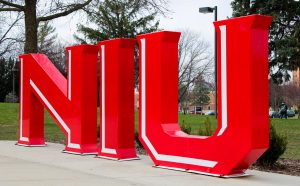The Pages of Purgatory
February 24, 2005
The year is 1942. A young war veteran named Michael Satariano has returned to his home of DeKalb after receiving the Medal of Honor in the Philippines.
Racked with guilt and remorse, Satariano finds it difficult to adjust to life in peace time. So when G-Man Elliot “Untouchable” Ness comes calling for Satariano, Michael doesn’t hesitate to rekindle his old war with the mob.
With the help of Ness, Satariano infiltrates a criminal organization headed by Al Capone and Frank Nitti. Experienced, connected, armed and dangerous, Michael sets out to avenge the death of his father at the hands of a mob assassin 10 years ago. In doing so, Michael begins his long road to Purgatory.
“The Road to Purgatory” is Max Allan Collins’ prose sequel to his graphic novel “The Road to Perdition,” which was adapted into a film of the same name with Tom Hanks in the lead role.
The main character, Michael Satariano, is really Michael Sullivan Jr., who traveled with his gangster father through the Depression era Midwest in “Road to Perdition.”
Collins’ novels are historical fiction, weaving Sullivan’s journey around historical figures such as Elliot Ness and Al Capone into non-fictional locales in DeKalb and Chicago.
The novel follows Michael from the jungles of the Philippines and through the urban jungle of gangland Chicago, but Michael begins his journey into Capone’s criminal empire in the idyllic town of DeKalb.
DeKalb contrasts the innocence of Michael’s childhood with the violence of his past. Although writer Collins grew up in Iowa, he has fond memories of the DeKalb area.
“My aunt and uncle live in Sycamore, and I was a visitor there and in DeKalb countless times, including high school,” Collins said. “So it was a small idyllic town in the Chicago area with which I was familiar – I could call upon my memories, not just research.”
Although DeKalb’s role in the book is small compared to the ominous setting of Capone’s Chicago, the themes presented by DeKalb remain a crucial part of Michael’s character. One character connected to the themes of DeKalb is Patsy Ann O’Hara, Sullivan’s high school girlfriend, who is studying to be a teacher at DeKalb’s Northern State Teacher’s College, the school which would one day come to be known as Northern Illinois University. O’Hara and DeKalb embody the innocence that complicates Sullivan’s mission of vengeance in Chicago.
For information on DeKalb, Collins contacted his cousin, Kris Povlsen, who is DeKalb’s 2nd Ward Alderman. Povlsen put Collins in contact with local historian Stephen J. Bigolin.
“My area of expertise is the old buildings and landmarks of DeKalb,” said Bigolin. “Max called me one evening and we spoke at great length. He wanted to use some landmarks as references for his novels. I recall sending some postcards of old buildings in DeKalb to use as the references.”
Landmarks such as the Egyptian Theatre and the bandshell provide the setting for the pivotal scenes that shape Michael’s journey from the cornfields of DeKalb to the Chicago underworld.
“The Road to Purgatory” is the middle installment in Collins’ trilogy of the American Dream. He has already begun writing the final installment, “The Road to Paradise,” and he has also published several graphic novels that tie into “The Road to Perdition” on various points of the Sullivan family’s journey.
Although DeKalb will not be a location in the “The Road to Paradise,” Collins did confirm the town is mentioned prominently throughout the narration. Having written most of the locales involved in his trilogy from childhood memory, Collins has similar advice for aspiring writers. He also believes college is a good source of writing experience.
“Write now, while you’re in an academic setting and can get some credit for it,” Collins said. “Also, write from your experience, and don’t be seduced by either literary pretension or commercial notions.”
“The Road to Purgatory” is available in bookstores now, and “The Road to Paradise” is tentatively scheduled for a November release.






